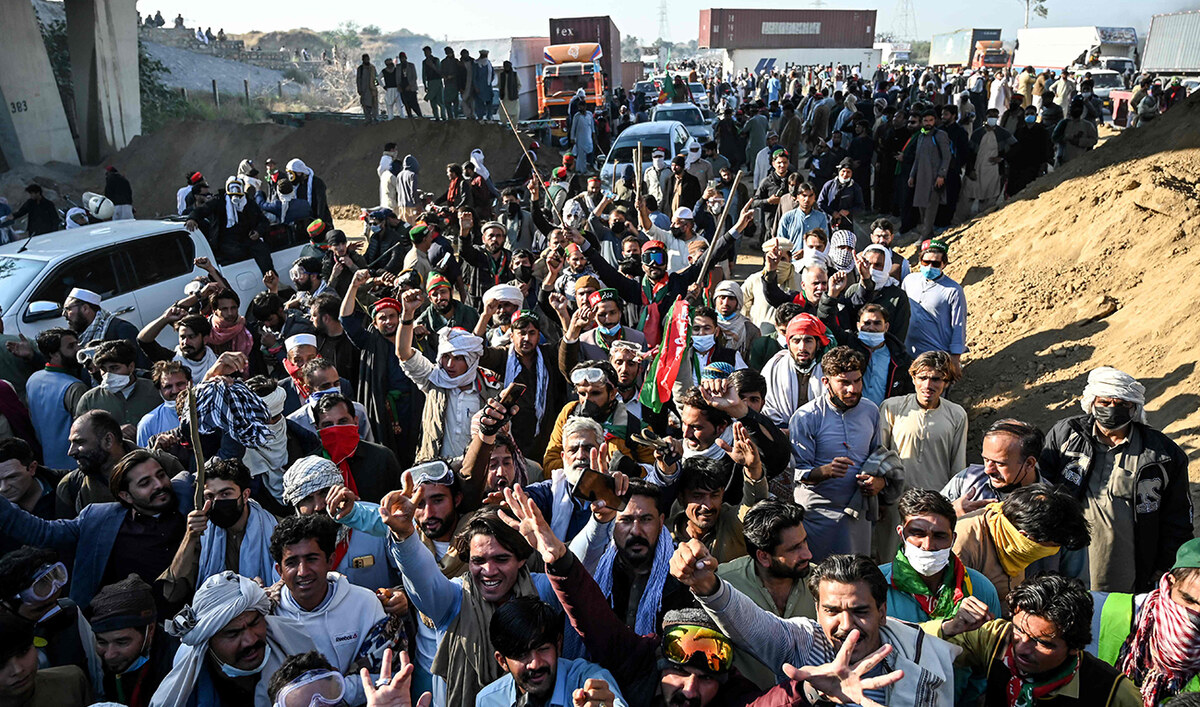ISLAMABAD: Prime Minister Shehbaz Sharif formed a high-level committee on Tuesday to handle potential emergencies during the upcoming monsoon season in Pakistan, state media reported, as the South Asian country braces for heavy downpours this month.
Pakistan’s National Disaster Management Authority (NDMA) last week warned the country is expected to receive heavy monsoon rains in July, particularly in Sindh and Punjab provinces, which it said could face an “emergency” situation.
Pakistan is recognized as one of the most vulnerable countries to climate change effects in the world. Unusually heavy rains in June 2022 triggered flash floods in many parts of the country, killing over 1,700 people, inflicting losses of around $30 billion, and affecting at least 30 million people.
“Prime Minister Muhammad Shehbaz Sharif on Tuesday formed a high-level committee to handle potential emergencies during the upcoming monsoon season,” the state-run Associated Press of Pakistan (APP) said.
The prime minister was chairing a review meeting to address the monsoon forecast and its potential emergencies, APP said, adding that it was attended by federal ministers, all chief executives of Pakistan’s four provinces, and Chairman NDMA Lt. Gen. Inam Haider Malik.
Sharif emphasized integrating advanced monsoon information into national broadcasts, stressing the importance of regular dissemination of weather updates to farmers and people living in areas vulnerable to floods.
He emphasized that farmers and residents living near rivers and canals should be updated daily through the media and other information sources.
“He instructed all relevant institutions to remain on high alert during the monsoon and directed the National Disaster Management Authority (NDMA) to support all provincial governments and related agencies,” APP stated.
The NDMA briefed the prime minister that all four provinces are expected to receive heavy rains in the first and second weeks of July.
“The forum was informed that this year’s monsoon rains in Pakistan will move from the southeast to the north,” APP said. “Rainfall is expected in the Potohar region and the eastern part of Punjab during the first week of July.”
Heavy rains in Rawalpindi, Sargodha, Gujranwala, Lahore, and Faisalabad, with scattered rainfall anticipated in Bahawalpur, Multan, Sahiwal, and Dera Ghazi Khan divisions are expected in the second week of July, the NDMA said.
It said that a flood-like situation is expected in Sutlej, Chenab, and Ravi rivers during the first two weeks of August. The NDMA said it had finalized preparations for relocation and emergency response in the areas surrounding these rivers.
“In Sindh, Karachi, Mirpur Khas, Nawabshah, Sukkur, and Hyderabad are expected to experience heavy rains in the second and fourth weeks of July,” APP said. “Additionally, monsoon showers are forecasted for Tharparkar, Badin, Thatta, and Umarkot in the third week of August.”
The NDMA said heavy rains are expected in Hazara, Malakand, Mardan, Peshawar, Kohat, Bannu, and Dera Ismail Khan in Pakistan’s northwestern Khyber Pakhtunkhwa (KP) province during July. Monsoon rains in the province are expected to persist until the third week of August.
Meanwhile, heavy rains have been forecast in Balochistan’s border areas located alongside Sindh’s coastal belt during the second and fourth weeks of July, and first two weeks of August.
“Additionally, significant rainfall is expected in Lasbela, Armada, Khuzdar, Barkhan, Sibi, and Zhob in the third week of August,” the state media reported.
The NDMA said “adequate stocks” of boats, tents, drainage pumps, medicines, and other essential items were available for people in areas prone to rain-related disasters, adding that preparations for the monsoon started in January with emergency response exercises ongoing since March.
Sharif was told that rescue agencies, Provincial Disaster Management Authorities (PDMAs), Pakistan Army troops and the NDMA remain on high alert in risk-prone areas. NDMA said it has launched a mobile phone application for monsoon alerts, weather conditions, and advance information.
“It was explained that a National Monsoon Contingency Plan has been drafted and distributed to relevant institutions and provincial governments to manage any monsoon-related emergency situations,” APP said.























